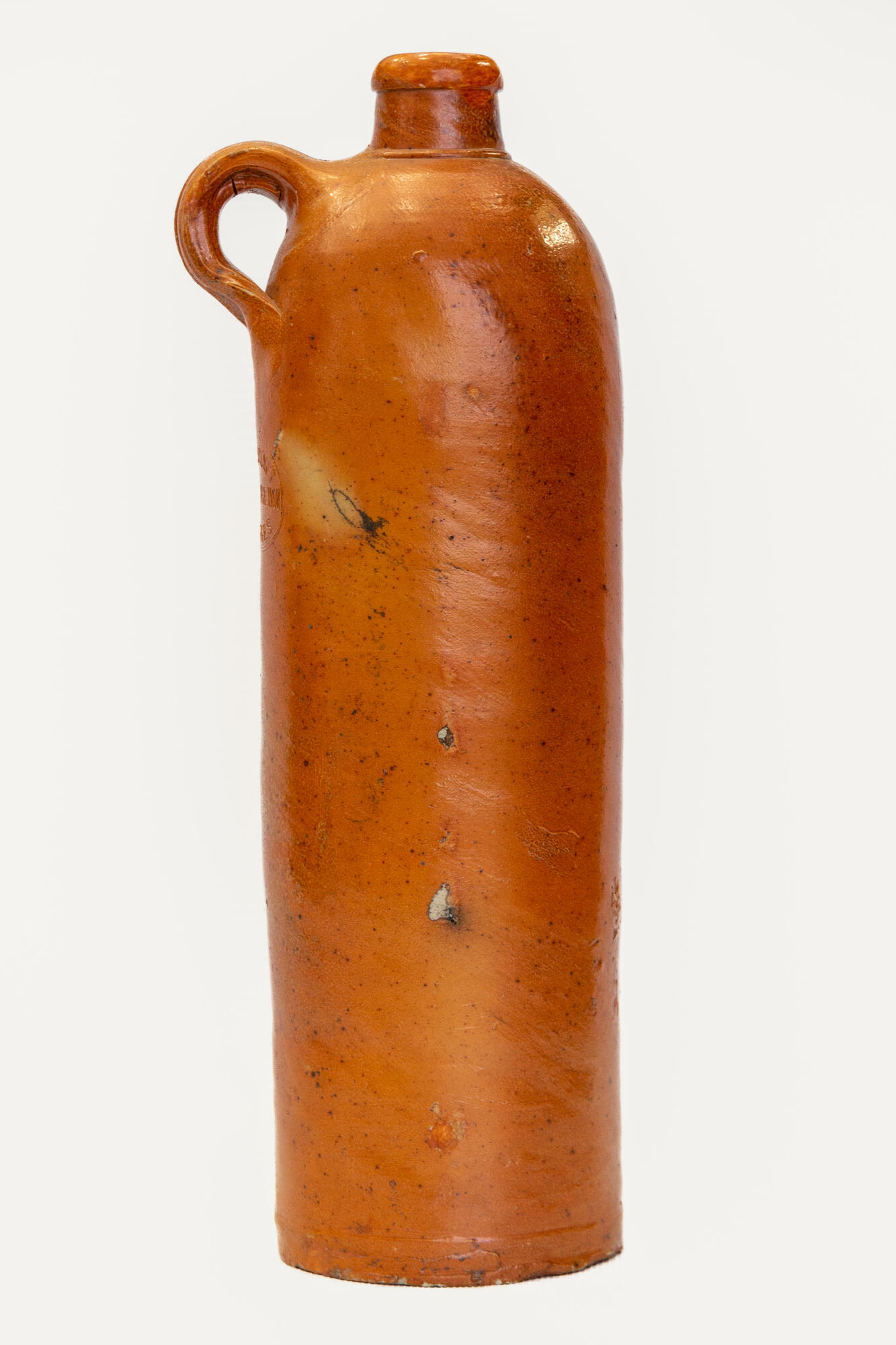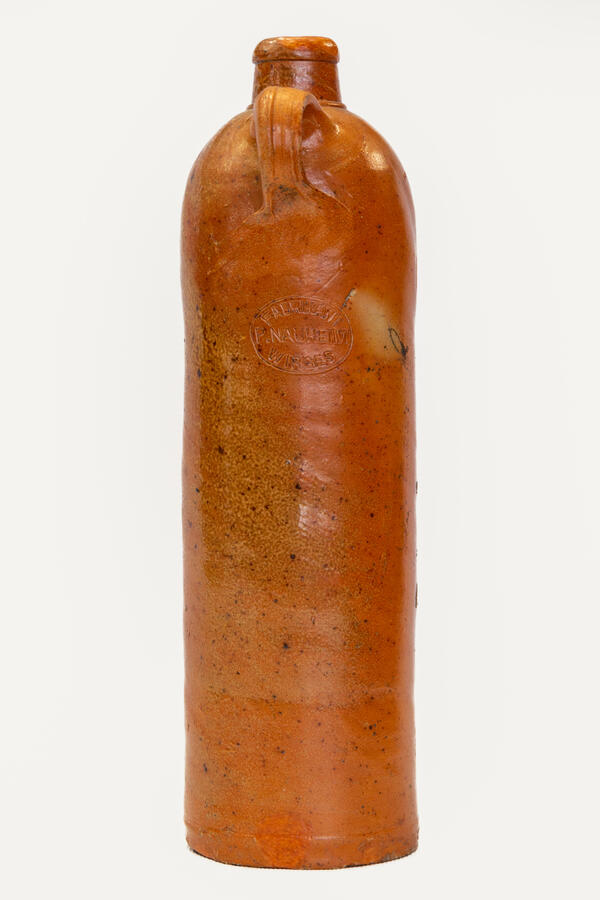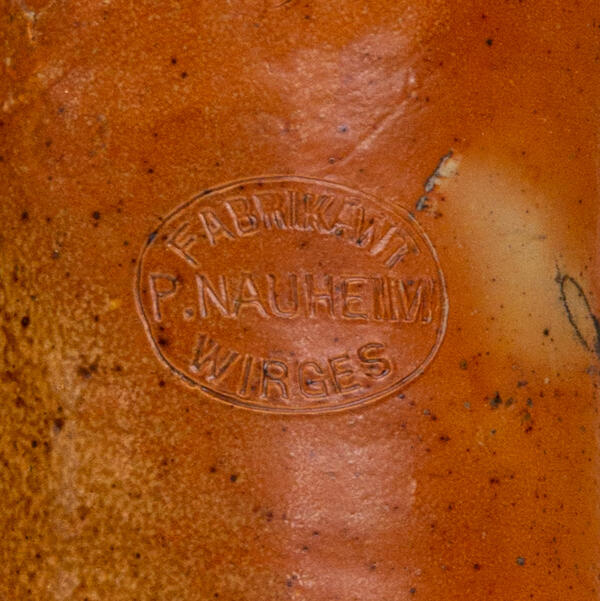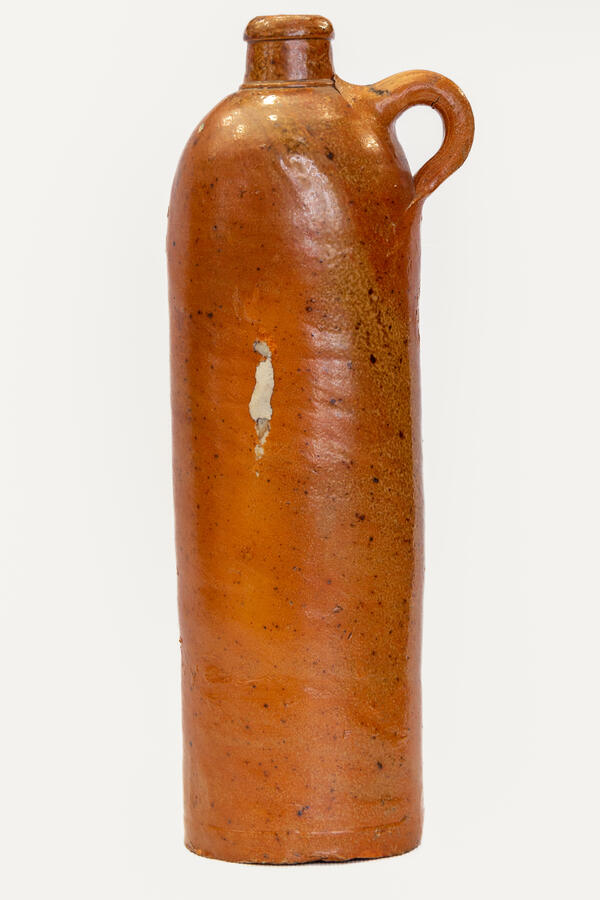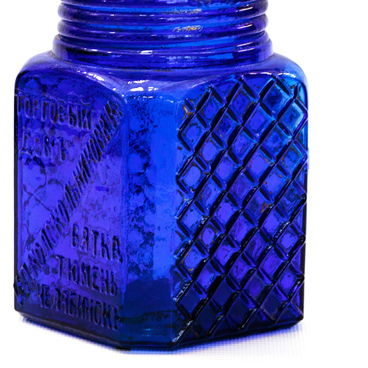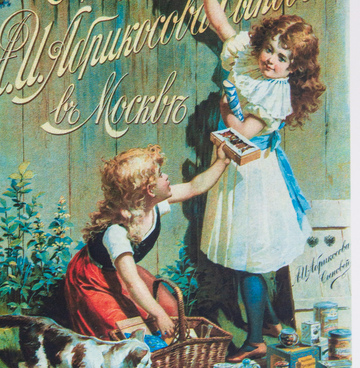The ceramic bottle presented at the exhibition bears the stamp “Krug-Fabrik Nauheim & Cic Wirges”. “Krug-Fabrik” translates to “jug factory”, “P.” is the first letter of the name and “Nauheim” is the surname of the factory’s owner. “P. Nauheim” is the name of the factory. The factory produced ceramic vessels for various drinks and was located in the small town of Wirges in the western part of Germany. The “Ivan Ivanovich Ion” vodka distillery in St. Petersburg, sold Riga Black Balsam in such ceramic bottles.
The balsam was aged in special oak barrels, thus adding a bitter flavor to the overall bouquet. In the 1840s, the production process was industrialized. From 1847 until the beginning of the Second World War, the fermentation and alcohol factory of Albert Wolfschmidt in Riga produced the “Riga Herbal Balsam”.
From 1860 to 1935, Riga Black Balsam received 33 gold and silver medals at international exhibitions. The Schrader brothers worked as craftsmen at the factory and were the keepers of the recipe. In 1939 they had to leave for Germany. They did not disclose the secret recipe, even though the owner of the factory promised a large sum of money if they did. And then nothing was heard of this beverage — neither during the war, nor for a long time after it. Most likely, the Schraders could not make use of the technology they had access to. The original recipe is believed to be lost.
In 1922, Riga Black Balsam was produced in the USSR by the Moscow branch of “Uzbekselprom”. The creator of the recipe, was presumably, Vladimir Vladimirovich Striter. The Striter family was first mentioned 1783, when Alexander von Striter — the German baron of Swedish descent and a native of Revel, who lived in Russia, began producing alcoholic beverages at a small factory in St. Petersburg. The Striters have been producing “Riga Balsam” since at least 1865. After the Revolution of 1917, the Striter factories were nationalized and became part of the “Glavspirt” association. Striter worked as the chief engineer-technologist of Glavspirt of the USSR until 1936.
In 1954, the Riga Distillery
once again began producing ceramic bottles with Riga Black Balsam. Step by
step, by way of trial and error and all sorts
of chemical analyses, the specialists at the factory tried to recreate the
original taste of the lost recipe. Bottles containing the original balsam were
used as the standard. Having gone through many failed attempts, the original flavor was finally recreated, and
Riga Black Balsam appeared in many countries.
